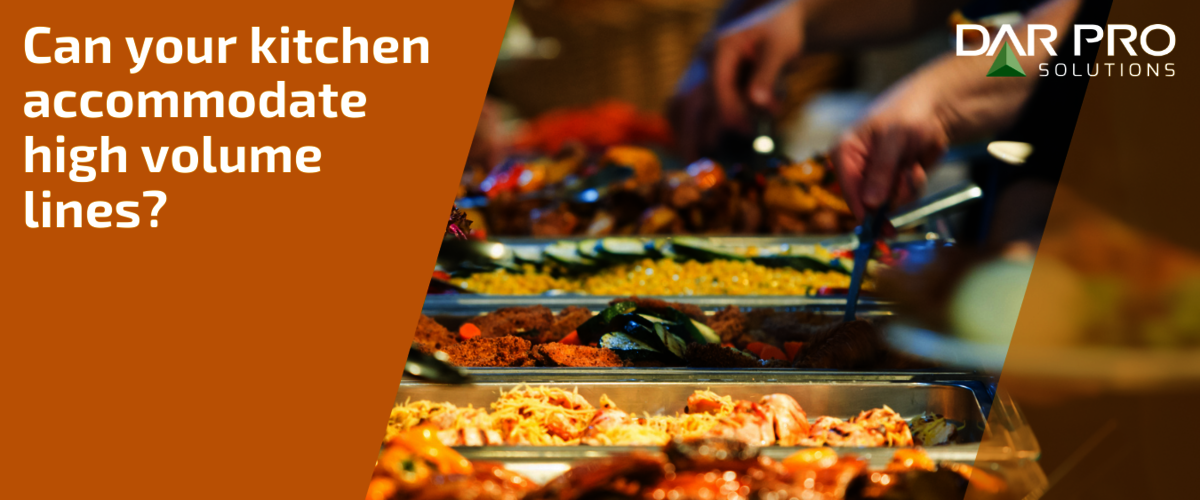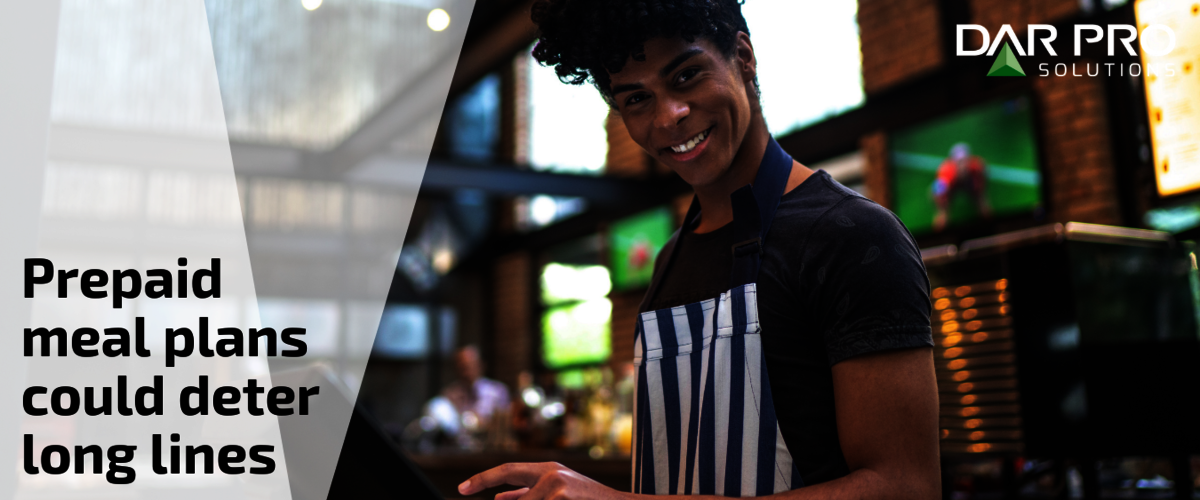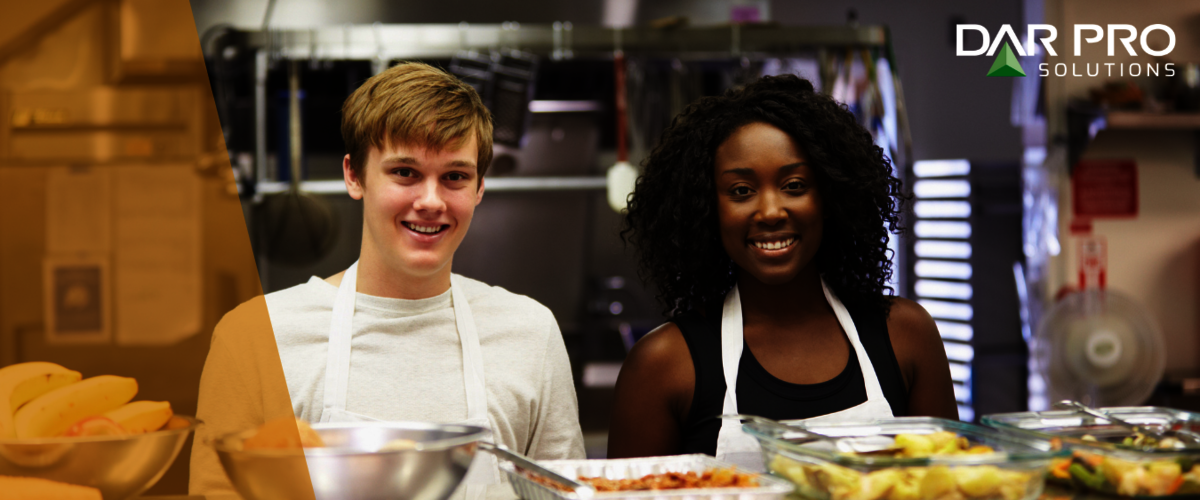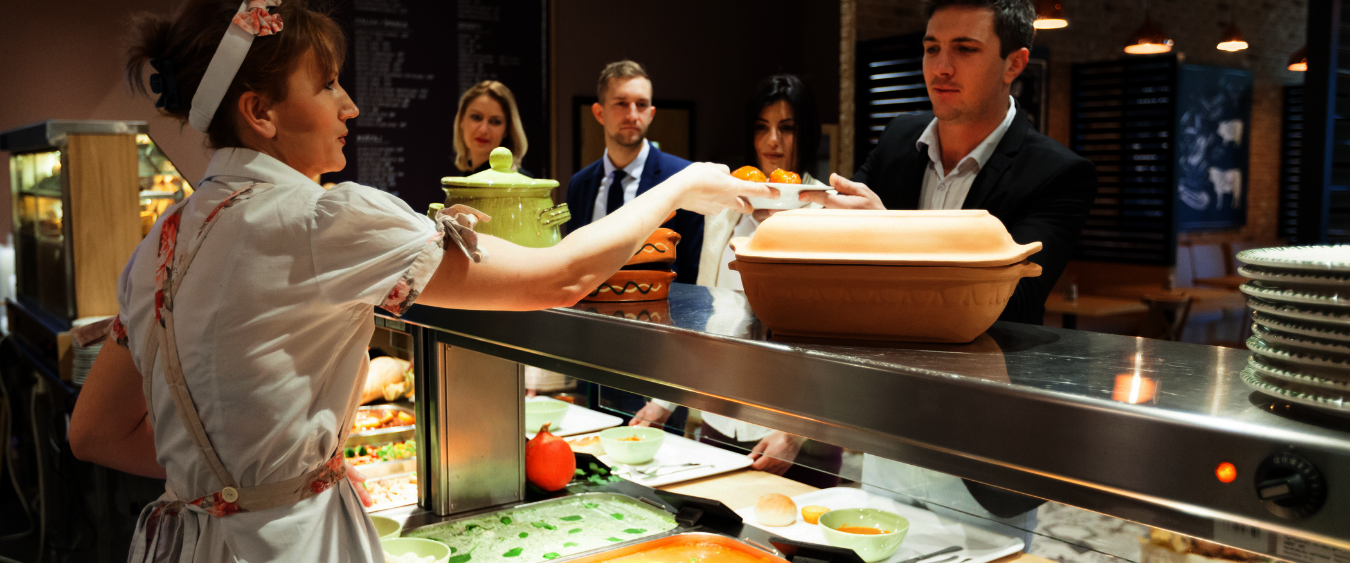Follow all administrative cafeteria guidelines
Firstly, it is important to ensure you meet all local and federal guidelines when it comes to your cafeteria menu. This is mostly relevant with school cafeterias whose menus have to be in accordance with their local district. There are restrictions on what can and cannot be used for cafeteria supplies and ingredients in order to avoid common food allergies and maintain a nutritional balance for children the cafeterias serve. Complying with these is a must if your cafeteria wishes to remain open.

Make sure the cafeteria menu selection is diverse
One of the biggest advantages to cafeteria- style dining is having options. Whether it is the á la carte style or a buffet line, people like options and that is what a cafeteria provides.
Keep Things Fresh
Rotating meals is a pretty standard practice in cafeteria kitchens, even in ones that have a select few items that are served daily. Posting a menu periodically might not be a bad idea, as it lets your customers, particularly any regulars, an idea of what to expect over the course of a week or month, or any seasonal highlights.
Feature Local Favorites
Partnering with local food trucks or restaurants is another good practice. You can have a particular meal or signature menu item from a restaurant or food truck available one day per week as a special within your cafeteria.
Be eco-friendly and efficient with your dishes and silverware
High-volume traffic means a lot of plates, dishes and silverware are needed to ensure your guests are adequately served and your operation continues to run smoothly. It’s important to be smart in how you approach this. Depending on how large your cafeteria is, using plates, trays and silverware that require dishwashing might not be the best route to go. And while disposable plates and silverware can add to your overall waste output and are not the greenest practice, there are newer, more ecofriendly disposable options available.
This can not only help save you time and money when it comes to washing dishes, it is something you can used to improve your brand. According to one report, 46% of consumers say that they value brands they buy from that actively recycle and commit to other eco-friendly practices. Associating your cafeteria with recycling and letting your customers know that you are doing your part are two great ways to enhance your brand. Check into the different biodegradable options out there as far as disposable dishes and silverware if that is the route you end up going.

Be proactive about monitoring the flow of cafeteria lines
No one likes long lines. A big part of the design of cafeterias is their ability to accommodate a high volume of foot traffic. The last thing you want in your crowded dining area are long lines and your customers growing restless as they pick out their food and try to check out in line. According to Technomic’s 2017 University Consumer Trend Report, 45 percent of consumers say fast service is a top priority when it comes to food service establishments. There are quite a few ways to combat this, the first is being proactive about identifying potential congestion areas, and, when you do, implementing a system to fix the problem. Your layout is key when setting up the cafeteria before opening. Make sure your cafeteria kitchen layout makes sense and will flow well.

Establish a prepaid cafeteria checkout option
Having a prepaid meal system is a good way to deter long lines at your checkout stations. This is a popular option at schools given that virtually all of the people dining in the cafeteria will do so virtually every day. It saves the time of your cashiers breaking change, swiping cards and handling receipts.

Create an efficient cafeteria layout
Another vital component to ensuring checkout lines aren’t incredibly long are simply ensuring there are enough checkout stations. Make sure you are well staffed and have enough staff and checkout lanes open to handle the lunch and dinner rush. Think of it like a grocery store – when the crowd picks up, more checkout lanes open. A large point of potential congestion is simply getting people out checkout lines. Are your various food stations laid out in a way that makes sense and that the foot traffic flow is natural? The design of your cafeteria, from checkout lines to food station location are important to preventing long lines.
Lastly - make sure you have enough food readily available, as simple as that sounds. A common source of congestion in a cafeteria are customers gathering to wait on the next batch of sandwiches or French fries. Ensuring that there isn’t a lag between the food being made and the food that is ready to be put on your customers’ plates will reduce the changes of congestion and particular food stations throughout your cafeteria.
Properly train your cafeteria management staff
Make sure your staff is properly trained to handle each aspect of your dining operation. As we mentioned early, a lag between the food you are making in your kitchen and the food readily available to be put on a plate is often a source of congestion, another way to combat it is to train your staff on serving proper food portions.
If your cafeteria is line-style in the sense your staff will put food on the plate of your guests, having a consistent method of putting portions on plate will help you be able to track how much food is needed and when you need to make more.
Sanitation is a key piece of this. Make sure you implement strict sanitation policies and that your staff abides by them. Cafeterias often have more people than a restaurant does when it comes to who handles the food before it gets to the customer. Sanitation is key to a good dining experience.

Be smart in handling your waste
Waste can add up quickly in a cafeteria, and being proactive about reducing it is important in preventing waste from becoming a problem.
Food waste is obviously a major component of a cafeteria’s overall food waste. Solidifying an efficient inventory system to ensure ingredients aren’t wasted due to expiring before they are used is important. Avoiding foods and ingredients with a short shelf life is a good rule of thumb. Many kitchens have implemented computerized inventory tools to help make sure their ordering and stocking process remains the efficient.
Find a trusted partner to recycle your used cooking oil
Used cooking oil recycling is something you might not necessarily think about when you think of kitchen waste, but can become a major issue if it isn’t handled properly. If your cafeteria does any deep frying, you are going to need to partner with a reputable used cooking oil service provider to help recycle your grease.
A proper storage tank and a safe an effective transfer method are essentials to preventing grease from becoming a problem. Often times, cafeterias aren’t stand-alone establishments. They’re in the center of larger building or a couple floors up. This can make grease recycling tricky. A quality recycling partner will outline a system to ensure your oil is transferred and stored safely without causing your cafeteria issues.

Whether hospital kitchens, school kitchens or any other corporate dining hall, DAR PRO Solutions can handle your used cooking oil via our comprehensive recycling program. Reach out to a DAR PRO representative today and find out how your business can benefit from our grease recycling and grease trap maintenance program.
Call us 24/7/365 at 855-DAR-PRO1 (855-327-7761).
Contact Sales
For customer service inquiries call our toll free number (855) 327-7761
By submitting this form I agree to the privacy policy including the usage of contact details to contact me for marketing purposes.
11/22/2021
